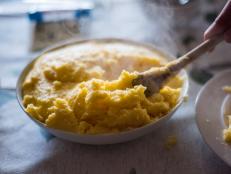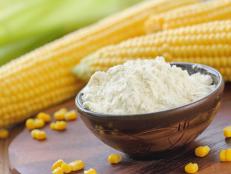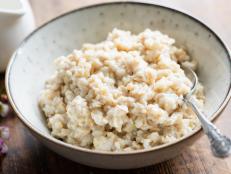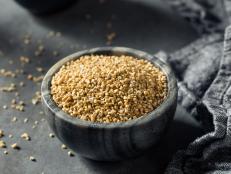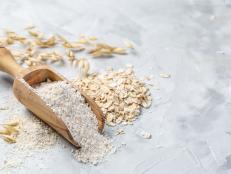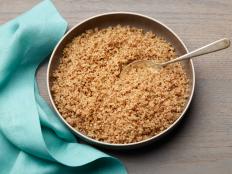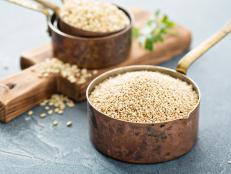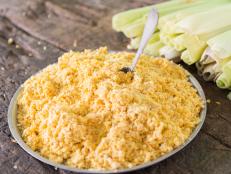What Are Grits?
All your questions answered—from how they taste to what to make with them.

bonchan/Getty Images
By Layla Khoury-Hanold for Food Network Kitchen
Layla Khoury-Hanold is a contributor at Food Network.
Grits were originally consumed by Native Americans and have been a long-standing staple across the American South. In southern cuisine, grits are commonly eaten for breakfast (though whether you’re on team sugar or team salt is an intensely debated personal preference). Grits also get top billing in classic lowcountry dishes such as shrimp and grits, and heirloom varieties and their provenances are touted on restaurant menus. Grits are also a practical and economic pantry staple that can feed a crowd or be served as a goes-with-just-about-everything side. But exactly what are grits?
What Are Grits?
Grits are made from ground corn, typically from less sweet, starchy varieties often referred to as dent corn. Grits can be made from either yellow or white corn and are often labeled accordingly.
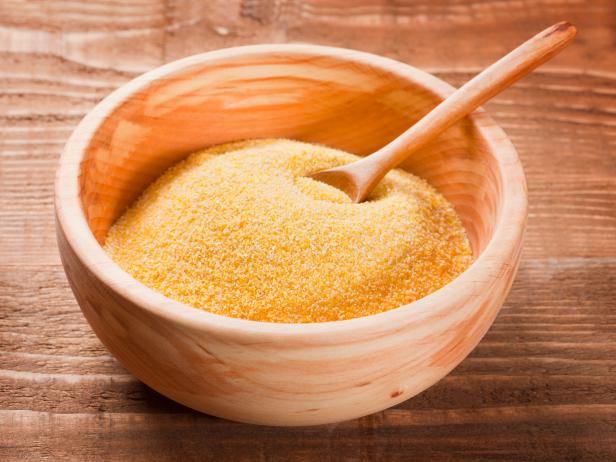
Drbouz/Getty Images
Varieties of Grits
- Stone ground grits (or old-fashioned grits) are ground with the germ intact so they have a coarser texture and more pronounced flavor than other varieties. Since they are less processed and therefore more perishable, it’s best to store them in the freezer.
- Quick cooking grits have been more finely milled, and as the name suggests, cook more quickly.
- Instant grits are pre-cooked and dehydrated and designed to be cooked by rehydrating with boiling water.
- Hominy grits are made from corn that has been soaked in an alkaline solution (often lime or lye) which softens the hull. The hull is removed, and the kernels are then dried and stone ground.
- Heirloom grits are made from different varieties of corn, so you might come across blue grits, made from blue corn, or Bloody Butcher grits, named for the variety of the dent corn’s burgundy-to-red hue.
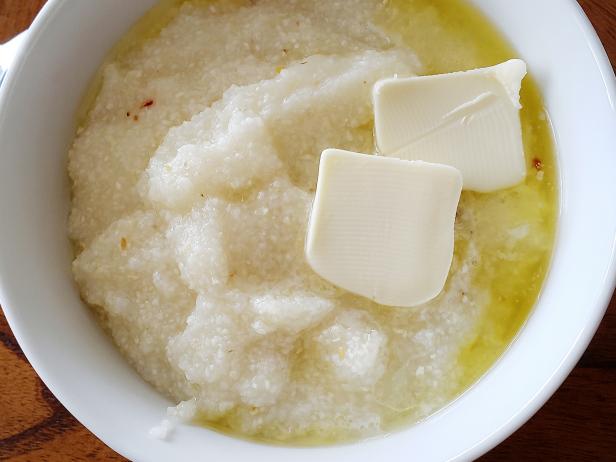
PhotoEuphoria/Getty Images
What Do Grits Taste Like?
Grits taste like corn, though in general they have a mild flavor and act as a neutral canvas that takes on other flavors easily. Stone ground grits tend to have the most flavor since they are ground with the germ intact; some say that grits made from yellow corn have a more pronounced corn flavor, while white grits tend to have a more delicate, subtle flavor. Heirloom varieties are prized for their distinct flavors and are typically ground to a medium or coarse texture to preserve their flavor and color. Quick cooking and instant grits are more finely milled and are mildest in taste.
Grits vs. Polenta
Polenta is a dish commonly found in Northern Italian cuisine and it’s made from a different type of corn than grits. Polenta is made from medium to coarsely ground flint corn, which tends to be less starchy than the dent corn used for grits. Therefore, polenta tends not to yield as creamy a texture as grits when boiled.
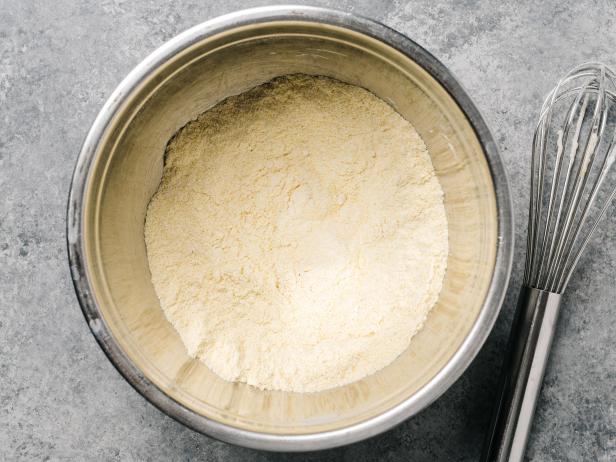
Cavan Images/Getty Images
Grits vs. Cornmeal
Like grits, cornmeal is made from dent corn, but it is finely processed to a flour-like texture that lends itself to baking, as with cornbread or corn muffins, or in breading applications, such as chicken or fish dishes.
How to Make Grits
To make grits, follow a four to one ratio of water to grits (you can always add more water if the grits are getting too thick before they finish cooking). Add salt to the water, bring water to a boil and add grits, stirring frequently for about 45 minutes (for stone ground grits). Slowly cooking your grits and stirring them often helps release their natural starches, creating a creamy texture and smooth consistency. In addition to water, you can also use chicken broth to cook grits. For a richer taste and creamier consistency, try incorporating milk, cream, butter or cheese. Quick cooking grits follow the same water-to-grits ratio, but since they’re more finely milled, they take significantly less time to cook, between 5 and 10 minutes. Instant grits have been pre-cooked and dehydrated, so they just need to be rehydrated with boiling water according to package directions. To reduce the stand-and-stir time, grits can also be baked in the oven.
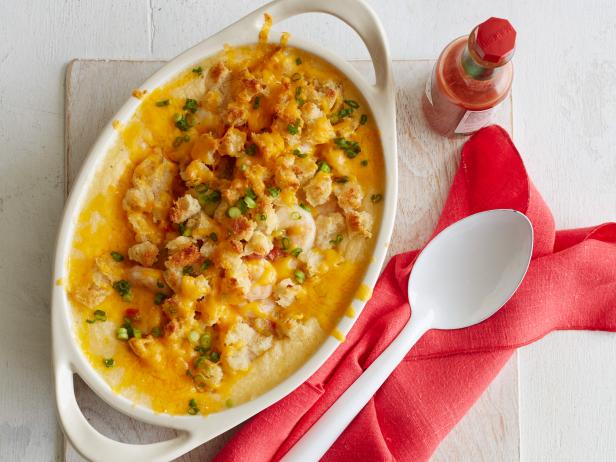
Matt Armendariz, 2014, Television Food Network, G.P. All Rights Reserved
Grits Recipes
Grits are a must for recipes like shrimp and grits or cheese grits. But they’re also a versatile starch with a neutral canvas that readily takes on other flavors. They can be eaten like porridge for breakfast or to accompany bacon and eggs, for lunch as part of a bowl with beans or leftover roast veggies, or for dinner as a side dish or main. Grits can also be used to make other staples, such as waffles or grit cakes.
Recipes call for different types of grits depending on the desired texture and flavor as well as cooking time. For example, coarse or medium stone-ground grits are good for dishes like shrimp and grits or cheese grits, though they take longer to cook (around 30 to 45 minutes). Stone ground grits, particularly heirloom varieties, tend to have a more pronounced flavor and a heartier texture, so consider those for a dish where you want the grits’ flavor to shine. Quick-cooking grits cook up in 5 to 10 minutes, making them a go-to for a quick weeknight side, as with this Smothered Pork Chops and Grits recipe. Instant grits are an economical feed-a-crowd option, particularly when they’re bolstered with butter and cheese and baked into a Shrimp and Grits Casserole.
Here are some of our favorite grits recipes.
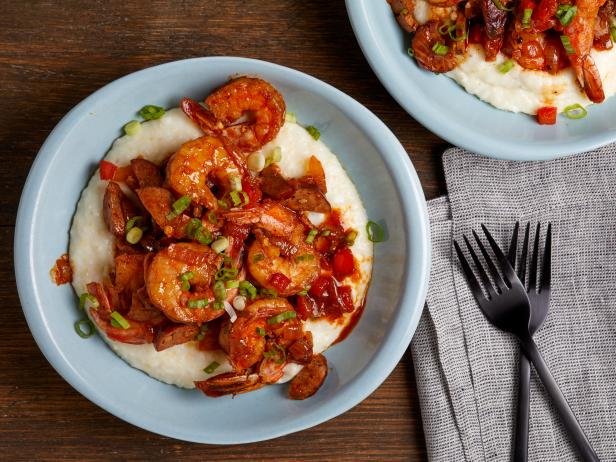
LUCY SCHAEFFER
Old fashioned grits are boiled with water, milk, salt and sugar until tender and creamy, then whisked with melted butter for a touch of richness. They make an ideal base for succulent shrimp and spicy andouille dressed in glossy, brick-red hued sauce.

Antonis Achilleos
This fan-favorite recipe features a lightened-up take on shrimp and grits that comes together in 30 minutes. Instant grits are seasoned with Parmesan and a little bit of butter before being topped with tender shrimp in a simple lemon-and-parsley pan sauce that adds a burst of brightness.
This cheese grits recipe is reason enough to always keep grits in the pantry. Once you master it, you’ll have a crowd-pleasing side that can be served alongside bacon, eggs and biscuits for Sunday brunch or with a simple roast chicken or broiled porkchops in the evening. For a richer taste, prepare the grits with chicken broth instead of water.
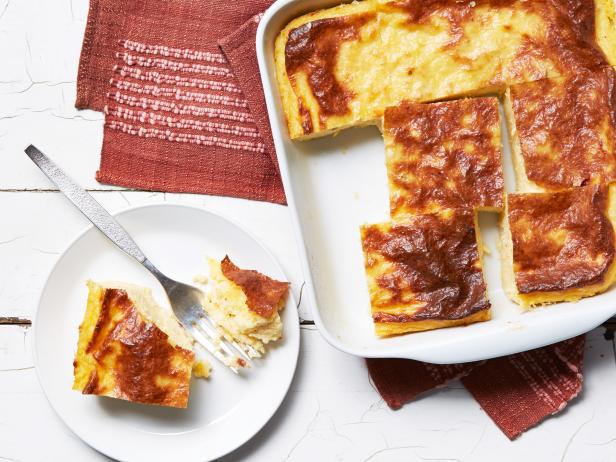
Armando Rafael
In this baked cheese grits recipe, grits are cooked with chicken broth for added savory depth. Grated cheddar and pepper jack lend flavor and a creamy consistency that, once baked, yield a custardy interior and a browned top for textural contrast and an added layer of cheesy flavor.
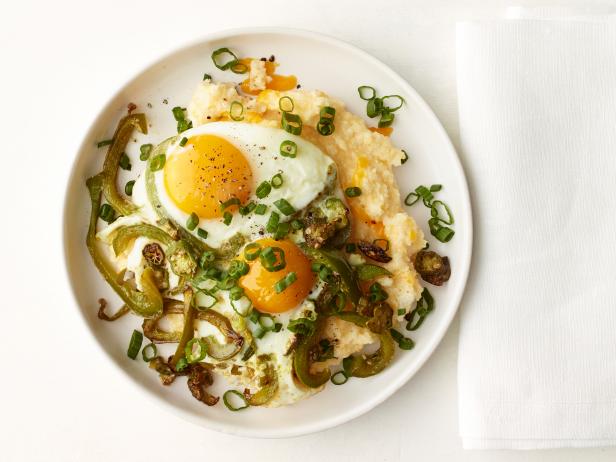
Johnny Miller
Quick cooking grits star on the breakfast table with this vegetarian take on grits and eggs. The cooked grits are stirred with cheddar cheese and served with sunny side up eggs and sautéed okra and peppers. We love how the runny yolk makes a sauce for the veggies and melds with the cheesy grits. A true comfort food breakfast.

Antonis Achilleos Prop Stylist: Marina Malchin 917 751 2855
Grits team up with frozen corn kernels to double down on the corn flavor in this virtually fool-proof soufflé recipe. Cooked then cooled quick cooking grits are blended with corn, cream cheese and Parmesan, then baked until golden. Pair with a simply dressed arugula salad for a light supper.
Related Links:
























